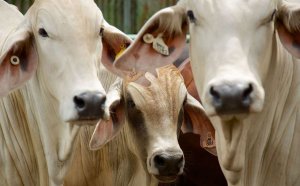|
Almost all of beef's flavor develops when it is cooked. The quantity of fat in beef influences its taste, as does a procedure called the Maillard response. Taste could be added to meat through brining and marinating.
- - - - - - - - - - - - - - - - - - - - - - - - - - - - - - - - - - - - - - - - - - - - - - -
|
Alanine, a simple amino acid
|
The Maillard response occurs when the denatured proteins on the surface of beef recombine because of the sugars present. The combination creates the "meaty" flavor and changes the color. For this reason, additionally it is known as the browning effect. The Maillard response happens most readily at around 300° F to 500° F. whenever animal meat is prepared, the surface reaches a greater temperature than the inside, triggering the Maillard response and generating the strongest tastes at first glance. During the early twentieth-century, Louis-Camille Maillard happened upon just what came to be known as the Maillard effect as he ended up being racking your brains on exactly how amino acids connected around form proteins. He found that when he heated sugars and amino acids collectively, the blend slowly turned brown. |
a sugar molecule
|
However it had not been until the 1940s that people noticed a link between the browning effect and taste. World War II soldiers were moaning about their powdered eggs switching brown and developing unattractive tastes. After many studies carried out in laboratories, scientists identified the unappetizing preferences had been coming from the browning response. Although the eggs had been saved at room-temperature, the concentration of amino acids and sugars in dehydrated blend had been sufficient to create a reaction. All the analysis done in the 1940s and 1950s centered around preventing this effect. Fundamentally, however, researchers found the part the Maillard reaction plays in generating flavors and aromas. For instance, as many as 1000 elements have now been identified within the aroma of meat. |
|
Osmosis takes place when liquid moves from a lower life expectancy focus of a solution to an increased concentration through a semipermeable membrane.
|
Marinades usually are consists of three elements: acid, oil, and herbs. The acid helps partially denature the animal meat's proteins, setting up "tunnels" in beef framework where flavor can seep in. But marinades mainly enter only the surface. Marinades work best on meats such as for example chicken and seafood, because the muscle mass structure is not as dense since it is in steak. For denser beef, marinades work best whenever animal meat is cut into smaller pieces therefore the marinade can enter a larger area. But if marinades are left on too much time, the acids can "prepare" the area, resulting in the meat to dry out. Some meats, such as chicken and steak, can marinate all night. Various other less dense slices of beef, such as chicken & most fish, only need to stay in a marinade for a short while.
Brining meat (that's, putting meat into a salt-water option) adds moisture to your beef through osmosis. Osmosis takes place when liquid flows from a diminished focus of a remedy to an increased concentration through a semipermeable membrane. In animal meat, this membrane layer is the plasma membrane layer that encompasses the individual cells. When animal meat is put in a brine, the beef's cell fluids are less concentrated than the salt liquid in brining option. Water flows from the cells into the beef and salt flows in. The sodium after that dissolves a few of the fibre proteins, together with meat's cellular liquids be concentrated, hence attracting water back. Brining adds salt and water towards the cells in order for if the meat is cooked and water is squeezed completely, there's nonetheless water left in the cells because liquid had been included before cooking.
|
Fat, a power source stored in pet muscle tissue, also plays a part in the flavor of animal meat. Liquid is the most prevalent component of beef, and most of this flavor-carrying, or aroma, particles are hydrophobic (repelled by-water). These molecules dissolve in fat.
Meat's fat content varies from animal to animal, and within each animal, it varies from component to part. Muscle tissue which are made use of often eat the stored-up fat, so the meat from all of these places lack a great deal fat. Areas that aren't used the maximum amount of avoid using just as much energy, so there is much more fat within these cuts. Your pet's age also is important in how much fat is in the animal meat. The older your pet, the greater time this has must build up fat-pocket power reserves with its muscle tissue.
|
Cattle that are bred for usage tend to be provided huge amounts of food to boost the quantity of fat that ordinarily takes place. The greater amount of fat in some meat, the more "marbled" its appearance; this is certainly, the greater amount of white lines of fat you will find. Marbled steaks are believed become probably the most flavorful beef cuts.
|
Because of the risks that could be involving consuming an excessive amount of red meat, pork is a well known option to meat. Pigs which are slaughtered are, for the most part, fairly youthful, and their muscles haven't built up power reserves. There are lots of chicken cuts that are obviously fatty, such as for example bacon, but breeders are actually utilizing processes to create slimmer chicken. The result is numerous chicken cuts are in possession of about the same amount of fat since the white beef in chicken.
|
With seafood, it really is another story. Unwanted fat in fish originates from the essential oils distributed in their skin; it is not kept in pockets because it's in beef and pork. These essential oils have actually slight flavors in as well as on their own, and so they subscribe to the taste of seafood.
|
Observe fat, collagen, and muscle kind affect the pain and juciness of meat.
|












